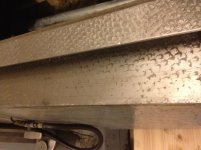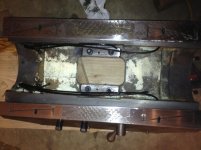I recently bought a late 60's Bridgeport mill with a 42" table. It has chromed knee ways and chromed table ways. The saddle does not appear to have any chroming on either side. The knee and table ways appear to be in decent shape with chrome and flaking intact. The saddle X and Y ways have flaking in the center third, but the flaking is mostly worn away on the outer thirds. So I'm considering having the saddle X and Y ways re-scraped to freshen them up.
I don't know of any reputable machine rebuilders in my area (Maryland). I know of some a couple hundred miles from me (like John Fahnestock). Is it possible and/or advisable to have the saddle rescraped without also having the knee and table to match it to? Like I said, the table and knee ways are in good shape and since they're both chromed I wouldn't have them reworked.
Reason I ask is that I can ship the saddle alone for rework much easier and at a much cheaper price than having to ship the saddle along with the knee, table and maybe even the column/base.
I don't know of any reputable machine rebuilders in my area (Maryland). I know of some a couple hundred miles from me (like John Fahnestock). Is it possible and/or advisable to have the saddle rescraped without also having the knee and table to match it to? Like I said, the table and knee ways are in good shape and since they're both chromed I wouldn't have them reworked.
Reason I ask is that I can ship the saddle alone for rework much easier and at a much cheaper price than having to ship the saddle along with the knee, table and maybe even the column/base.








